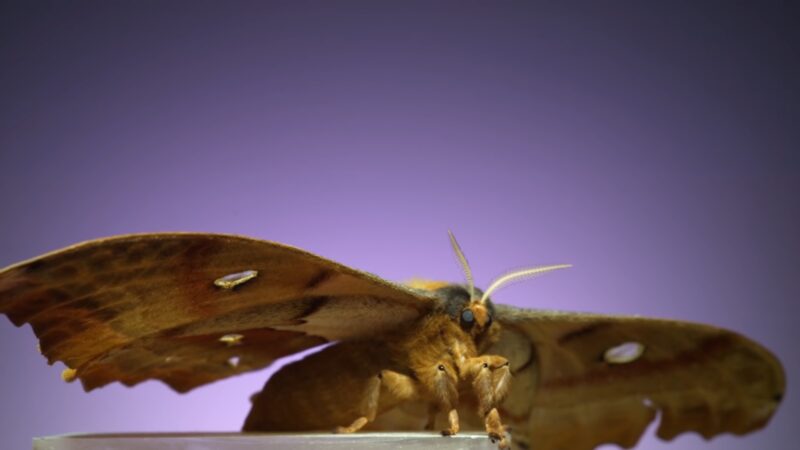As a professional clothes cleaner, I’ve witnessed the damage moths can inflict on wardrobes. These tiny pests have a peculiar taste for our clothes, but why? And how can we protect our garments from their destructive appetites? This article delves into the world of moths, their dietary habits, and their preference for certain fabrics.
We’ll identify the signs of a moth infestation and provide practical steps to safeguard your wardrobe. Whether you’re a fashion enthusiast, a professional dealing with clients’ garments, or someone wanting to protect their everyday wear, this article is for you.
Let’s unravel the mystery of why they eat your clothes and learn how to keep our wardrobes infestation-free. Together, we can overcome these wardrobe woes!
Meet the Moths
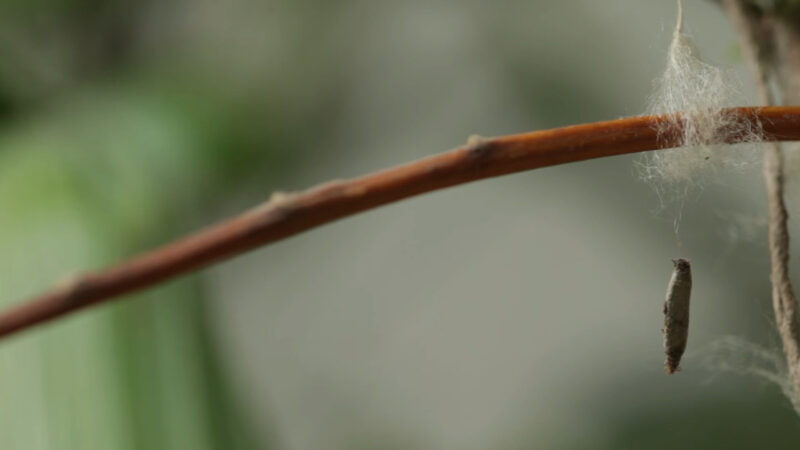
Life Cycle
Moths, akin to all insects, undergo a fascinating transformation known as metamorphosis, which includes four distinct stages: egg, larva, pupa, and adult. The journey begins when a female moth lays eggs on suitable material that will provide food for the larvae.
These eggs hatch into larvae, commonly known as caterpillars. It’s these caterpillars that are the real culprits behind the damage to our clothes. They feed voraciously on various materials to fuel their rapid growth.
In the context of the taiga, or boreal forest, moths and their larvae play a crucial role in the food web. Many species of birds, small mammals, and even other insects rely on moth larvae as a primary food source.
The adult moths, in turn, serve as pollinators for a variety of taiga plants, contributing to the biodiversity of these forests. After a period of intense feeding and growth, the caterpillar forms a cocoon or pupa, within which it undergoes a remarkable transformation.
Eventually, it emerges as an adult moth, ready to start the cycle anew. This cycle, from egg to adult, not only perpetuates the moth population but also sustains the intricate web of life in the taiga ecosystem.
Types
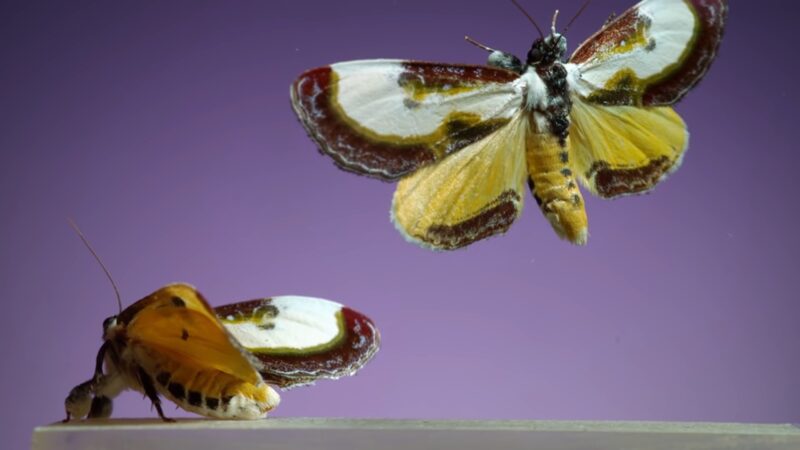
While there are over 160,000 species of moths worldwide, not all are interested in our wardrobes. The ones that are, belong to the Tineidae family, which includes the infamous clothes moth (Tineola bisselliella) and carpet moth (Trichophaga tapetzella).
These species have evolved to feed on keratin, a protein found in natural fibers such as wool, silk, and fur. This adaptation allows them to exploit a food source that many other creatures can’t, giving them a unique ecological niche.
Habitats
Moths have a preference for dark, undisturbed areas like closets, attics, and storage boxes. These environments mimic their natural habitats – the dark and quiet corners of caves and animal burrows.
They are particularly attracted to clothes that have been worn and not washed. This is because human sweat and body oils provide essential nutrients, including salts and amino acids, that are otherwise lacking in their diet. Furthermore, the scent of a human can also help to mask the presence of the moth larvae from potential predators, providing an additional incentive for moths to lay their eggs on our clothes.
Why Moths Target Clothes
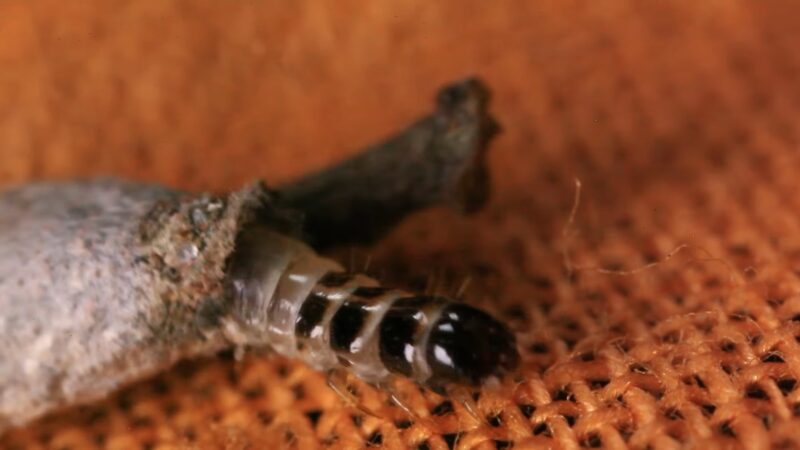
The Keratin Connection
Moth larvae have a unique dietary preference – they feed on keratin, a complex protein found in natural fibers such as wool, silk, fur, and feathers. Keratin is a tough, resilient protein that forms the structural component of hair, nails, horns, and feathers in animals.
The strength and durability of certain materials are attributed to a protein called keratin. Although keratin is not easily digestible for most creatures, larvae possess unique enzymes that enable them to break down and extract nutrients from this protein. Materials like synthetic fabrics, cotton, and linen, which do not contain keratin, are less susceptible to attacks unless they are blended with wool or contaminated with food or body oils, which could serve as additional sources of nutrients. However, it should be noted that polyester is an exception in this case.
The Role of Smell
Moths have a keen sense of smell, which they use to locate suitable feeding and breeding grounds. They are particularly attracted to the smell of sweat and body oils on clothes.
These biological residues provide additional nutrients and moisture, making your worn clothes a perfect feast for these tiny creatures. The salts, amino acids, and other compounds in sweat and body oils can supplement the larvae’s diet, providing them with essential nutrients that are not present in keratin alone. This is why clothes that have been worn and not washed are more likely to be targeted by moths.
The Need for Camouflage
Moths, like many other creatures, use camouflage as a key survival strategy. The patterns, textures, and colors of textiles provide an excellent hiding place for larvae.
By blending in with their surroundings, they can avoid detection by predators and increase their chances of survival. This is another reason why moths are drawn to our wardrobes. The diverse range of materials and colors in a typical wardrobe provides ample opportunities for camouflage, making it an ideal habitat for these pests.
The Impact on Clothes
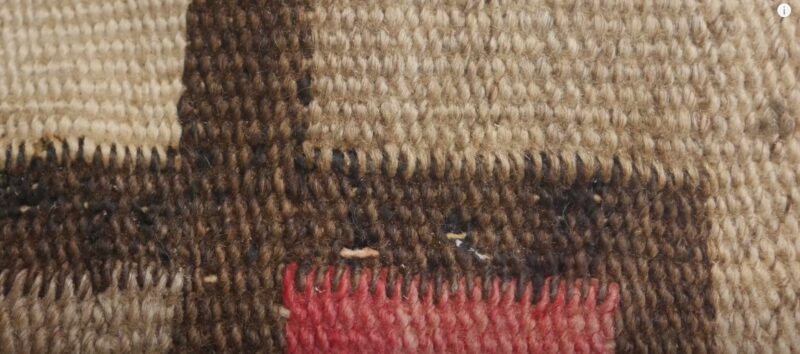
Recognizing Damage
Moth damage is often mistaken for wear and tear, but there are distinct signs that set it apart. The most obvious sign is the presence of irregular holes in clothes. These holes are the result of larvae feeding on the fabric.
Unlike regular wear and tear, which tends to occur in high-friction areas like elbows and knees, damage can appear anywhere on the garment. Along with holes, you might also notice a musty or stale smell.
This is caused by the waste products of the larvae. Other signs of an infestation include the presence of web-like cocoons, which the larvae spin for protection during the pupal stage, or even the tiny, creamy-white larvae themselves.
The Cost of Infestations
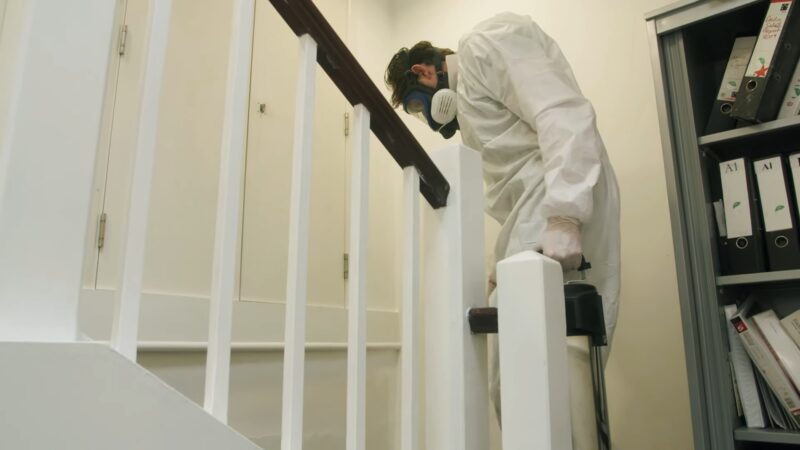
The financial impact of an infestation can be significant. They don’t discriminate between a high-street sweater and a designer dress – if it’s made of natural fibers, it’s fair game.
This means that valuable items like designer clothes, vintage pieces, or family heirlooms can be damaged or even ruined. The cost of replacing these items can quickly add up. Moreover, professional pest control services may be required to fully eradicate a severe infestation, adding to the financial burden.
Health Risks
While moths themselves are not directly harmful to humans, their presence can cause health issues in some people. The scales on their wings can become airborne and, if inhaled, can cause allergies and respiratory problems such as coughing and wheezing.
In addition, the larvae can contaminate food if they infest pantry items. Consuming food contaminated with larvae or their waste products can lead to gastrointestinal discomfort or food poisoning. Therefore, it’s important to address an infestation promptly to minimize these health risks.
Preventing Infestations

Regular Cleaning
Regular cleaning is a crucial step in preventing infestations. They lay their eggs in quiet, undisturbed areas, and regular vacuuming and dusting can help remove eggs and larvae before they have a chance to cause damage.
Washing clothes not only cleans them but also eliminates the sweat and body oils that attract moths. It’s particularly important to clean clothes before storing them for long periods, as dirty clothes are more likely to attract them. If possible, clothes should be dry cleaned or washed in hot water, as this can kill any eggs or larvae that may be present.
Proper Storage
How you store your clothes can also make a big difference in preventing moth infestations. Clothes should be stored in a cool, dry place, as they are attracted to warmth and humidity.
Using special repellents like cedar wood or mothballs can help deter moths, but these should be used carefully, as they can be harmful to pets and children. Clothes made from natural fibers should be stored in airtight containers or garment bags to protect them from moths. If you’re storing clothes for a long time, consider using vacuum-sealed bags, which can protect clothes from moths and other pests.
Regular Inspection
Regularly inspecting your clothes and closets for signs of moths can help catch an infestation early, before it becomes a major problem. Look for telltale signs of infestation damage, such as holes in clothes, a musty smell, or the presence of larvae or cocoons.
If you find any signs of moths, take action immediately to prevent further damage. This might involve washing or dry cleaning affected items, thoroughly cleaning the storage area, and using special repellents or pest control services if necessary. Regular inspection and early detection can prevent extensive damage and the need for costly replacements.
Dealing with Infestations
Cleaning and Quarantine
If you discover moths in your clothes, immediate action is necessary to prevent the infestation from spreading. Start by isolating the affected items. This quarantine prevents larvae or eggs from being transferred to other areas of your home.
Next, clean these items thoroughly. Washing or dry cleaning can kill larvae and eggs, while vacuuming can remove them from the fabric’s surface.
Don’t forget to clean the storage area thoroughly as well. Vacuum all surfaces, including the corners and crevices where moths might lay their eggs, and wipe down shelves and drawers with a damp cloth to remove any remaining eggs or larvae.
Professional Pest Control
For severe infestations, you may need to call in professional pest control services. These experts have access to a range of treatments that can effectively eliminate moths at all life stages.
Heat treatment, for example, involves heating the infested area to a temperature that kills eggs, larvae, and adult moths. Insecticides can also be used, but these should be handled by professionals to ensure they are used safely and effectively. Remember, professional treatment may be necessary to fully eradicate a severe infestation and prevent it from recurring.
Preventing Future Infestations
Once you’ve dealt with an infestation, it’s important to take steps to prevent future problems. This includes regular cleaning to remove potential food sources and eggs, proper storage to protect your clothes, and using special deterrents such as cedar wood or mothballs.
Regular inspection of your clothes and storage areas can also help you catch any new infestations early before they have a chance to cause significant damage. By being proactive, you can keep your clothes safe and maintain a moth-free wardrobe.
Final Words
Understanding the world of moths, their life cycle, dietary habits, and their impact on our clothes, equips us to better protect our garments. Regular cleaning, proper storage, and vigilant inspections are key to preventing infestations.
Swift action, including cleaning, quarantining affected items, and seeking professional help for severe infestations, can mitigate damage and cost. As a professional clothes cleaner, I hope this article has shed light on why they target your clothes and how you can safeguard your wardrobe.
Let’s use this knowledge to overcome wardrobe woes and maintain a moth-free environment. Together, we can ensure our clothes remain safe from these voracious pests.
Related Posts:
- What Do Coyotes Eat? From Prey to Gourmet
- What Do Squirrels Eat? - Nutritional Facts
- What Do Weasels Eat? - Diet, Lifestyle, and Adaptations
- What Do Black Bears Eat? Insights into Their Diet
- What Do Wolves Eat? A Closer Look at The Hungry Hunters
- What Do Raccoons Eat? - How Their Diets Overlap and Differ


